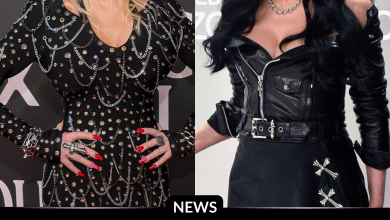Beyond the Blonde Bombshell: How Marilyn Monroe Proved Her Critics Wrong With Business Brilliance
OPINION: This article may contain commentary which reflects the author's opinion.
Marilyn Monroe remains one of the most iconic figures in Hollywood history, often remembered for her glamorous, sex-symbol image. However, this public persona, which leaned heavily on the “dumb blonde” stereotype, has long been criticized for oversimplifying her true nature. While Monroe was frequently cast in roles that emphasized her beauty and sexuality, a closer look at her life and career reveals a multifaceted individual who not only defied expectations but also actively challenged the stereotype through her intelligence, business savvy, and dedication to her craft. This article delves into how Monroe proved the “dumb blonde” image wrong, drawing from historical accounts, biographical insights, and cultural analyses.
The “Dumb Blonde” Stereotype and Monroe’s Public Image
The “dumb blonde” stereotype, often depicted as a woman who is physically attractive but lacking in intelligence, was pervasive in mid-20th-century media. Monroe was frequently cast in roles that reinforced this trope, notably in Gentlemen Prefer Blondes (1953), where her character, Lorelei Lee, was portrayed as a “fragile woman who relied on her looks rather than on intelligence.” The film’s famous song “Diamonds Are a Girl’s Best Friend” showcased Monroe’s wit, yet the character was still largely seen as a superficial, gold-digging woman.
Cultural perceptions, fueled by blonde jokes and media portrayals, often reduced Monroe to a mere caricature of femininity. However, research and biographies, such as Sarah Churchwell’s The Many Lives of Marilyn Monroe (2004), argue that this portrayal was not Monroe’s true self. As Churchwell noted, “The dumb blonde was a role – she was an actress, for heaven’s sake! Such a good actress that no one now believes she was anything but what she portrayed on screen.” Monroe herself understood the power of her image but never fully embraced it as a reflection of her capabilities.
Proving the Stereotype Wrong: Business Ventures
One of Monroe’s most significant achievements was her founding of Marilyn Monroe Productions (MMP) in 1954, alongside photographer Milton Greene. At the time, the Hollywood studio system was notorious for typecasting actresses, leaving little room for creative control or independence. MMP allowed Monroe to produce films independently, starting with The Prince and the Showgirl (1957), and it granted her the ability to negotiate better contracts with Fox, including higher salaries, approval over directors, and greater creative freedom.
Monroe’s move to establish a production company was particularly bold given the male-dominated nature of the industry. In 1954, after the success of The Seven Year Itch, she famously left Hollywood for New York, asserting that she was “tired of the same old sex roles” and criticizing Fox for failing to meet contractual promises. This led to a year-long legal battle, but Monroe emerged victorious, securing a new contract that reflected her growing influence in Hollywood. Entertainment Weekly praised her as “whip smart, witty, ambitious, strategic, and above all, incredibly courageous,” highlighting how Monroe turned the tables on the studio bosses who had once controlled her career.
Dedication to Acting: Method Acting and Critical Acclaim
Monroe’s commitment to her craft further disproved the “dumb blonde” stereotype. Her dedication to improving her acting skills was evident when she studied method acting under Lee Strasberg at the Actors Studio, a technique known for its emotional authenticity and depth. Strasberg himself considered her one of the two greatest acting talents he had worked with, alongside Marlon Brando, demonstrating her potential beyond the surface-level roles she often received.
Monroe’s performance in Bus Stop (1956) is widely regarded as one of her most serious and critically acclaimed works. The Saturday Review of Literature lauded her performance, stating, “Monroe’s performance effectively dispels once and for all the notion that she is merely a glamour personality.” This role earned her a Golden Globe nomination for Best Actress, proving that Monroe was capable of much more than the stereotypical roles she was often offered.
Her clash with Laurence Olivier during the making of The Prince and the Showgirl (1957) further illustrated her commitment to her craft. Olivier, with his classical approach to acting, was frustrated by Monroe’s method acting style, which emphasized emotional improvisation and spontaneity. Despite their differences, Monroe’s dedication to her technique and her willingness to push boundaries made it clear that her intelligence extended far beyond her public persona.
Intellectual Curiosity: Reading Habits and Literary Interests
Perhaps the most surprising aspect of Monroe’s true character was her intellectual curiosity. Contrary to the image of the naive, uninformed blonde, Monroe was an avid reader with a personal library of over 400 books. Her collection spanned a wide array of genres, including American literature, Russian literature, poetry, plays, and philosophy. She was particularly drawn to authors like James Joyce, Fyodor Dostoevsky, and Thomas Hardy, illustrating her deep appreciation for classic literature and intellectual exploration.
Monroe’s reading habits were a far cry from the superficial image often projected onto her, showing that she had a genuine interest in expanding her mind and exploring complex ideas. This intellectual curiosity was reflected in her conversations and personal interests, which often included discussions of politics, art, and the human condition.
Legacy and Influence
Marilyn Monroe’s legacy continues to transcend the “dumb blonde” stereotype, revealing a woman who was not only a talented actress but also a savvy businesswoman, a dedicated artist, and an intellectually curious individual. While Hollywood may have initially typecast her into a limited role, Monroe’s career and life prove that she was far more than the glamorous, naïve figure the media often portrayed.
Her courage in challenging the studio system, her devotion to honing her craft, and her voracious appetite for knowledge all underscore a complexity that went unnoticed by many during her lifetime. Today, Marilyn Monroe is remembered not only as a cultural icon but also as a trailblazer who defied the expectations placed upon her, forever proving that she was anything but a “dumb blonde.”



